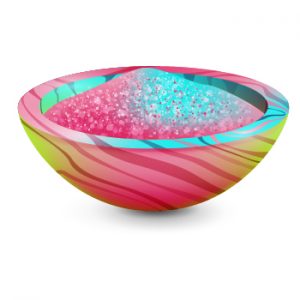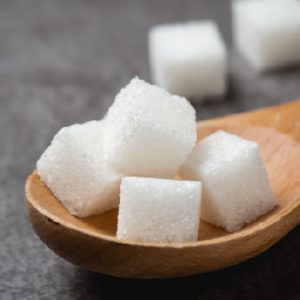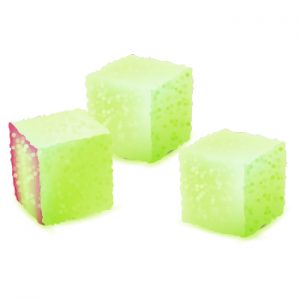
Sugar, a Healthy or Harmful Thing?
It can appear as if nutrition experts are continually arguing with one another or releasing fresh information that contradicts what they’ve already stated. However, at the James Beard Foundation Food Conference last week, several major food industry executives stated emphatically that we should all be eating substantially less sugar.
And sugar happens to be in all of our food like soft drinks, fruit juice, and most of the things we eat. Sugar isn’t harmful in and of itself. Consuming a natural source of sugar, on the other hand, is better for your health than consuming added sugars. Excess sugar in the diet can lead to a variety of health problems, such as heart disease, weight gain, and diabetes. Natural sugars are healthy and not harmful but consuming a lot of raw sugar can affect health badly. Adding teaspoons of sugar to your daily tea will affect your health. People also read: how to stay healthy as a freelance translator.
The average person consumed roughly four pounds of sugar per year in 1776, during the onset of the Revolutionary War. In the United States, per capita, sugar consumption now exceeds 120 pounds.
The average adult eats the equivalent of six bowling balls of the substance each year, according to the American Heart Association. In the meantime, the average child consumes enough sugar to fill a bathtub.


Diseased Caused or Triggered by Sugar
Sugar, notably added sugar that does not occur naturally in whole fruits or vegetables, has long been blamed for the disturbingly high rates of obesity, type 2 diabetes, and other metabolic illnesses in the United States. They’ve lately proposed that sugar may play a role in the development of inflammatory bowel disease, gut-related autoimmune diseases, and food allergies or sensitivities like tooth decay, all of which are on the rise. Experts, on the other hand, have been unable to determine how sugar causes or contributes to these health problems. Sugar content is harmful but the question is how?
Is Sugar Harmful?
When it comes to health, sugar has a mixed reputation. It’s fine to eat complete meals that include natural sugar. Dairy foods contain protein and calcium, whereas plant foods contain fiber, vital minerals, and antioxidants.
The sugar in these foods delivers a continuous flow of energy to your cells since they are slowly digested. A high-fiber diet, consisting of fruits, vegetables, and whole grains, has been shown to reduce the risk of chronic diseases such as diabetes, heart disease, and certain cancers.
Soft drinks, fruit drinks, flavored yogurts, corn syrup, Maple syrup, Malt syrup, cereals, cookies, cakes, sweets, and most processed foods are the leading sources in the American diet. However, added sugar can be found in items you might not anticipate to be sweetened, such as soups, bread, cured meats, and ketchup. A healthy diet is very important for a healthy lifestyle.
As a result, we consume far too much sugar from added sources. According to the National Cancer Institute, adult men consume an average of 24 teaspoons of added sugar in a cup of coffee every day.
This is the equivalent of 384 calories.
“The influence of excess sugar on obesity and diabetes is well recognized,” says Dr. Frank Hu, professor of nutrition at Harvard T.H. Chan School of Public Health. “However, one area that may surprise many men is how their taste for sugar can have a major impact on their heart health.”
3 Main Ways How If Harm Human Body?
The first has to do with how your stomach and liver to process the sugar you consume. The intestine has the potential to convert fructose into downstream metabolites that you don’t absorb up to a degree. To put it another way, if you don’t eat a lot of sugar, your gut will pass the majority of it on to your excrement. Any sugar you do absorb will wind up in your liver, where it will be converted to energy. If sugar level increases from average blood sugar level, it is harmful to your body. You need to have a balanced diet to avoid such issues. The gut’s semipermeable lining is the source of the second sugar-related issue.
This lining is intended to operate as a dynamic, highly selective barrier, allowing nutrients to pass through while keeping dangerous germs, big food molecules, and other unwanted substances out. The microbiome — the billions of bacteria that inhabit the GI tract — is the third-way sugar damages the gut. While some of these bacteria are beneficial to our health, others have been linked to diabetes, autoimmune disorders, and other health issues. The types and quantity of bacteria that live in a person’s gut are influenced by his or her food.


Is Brown Sugar a Good Alternative?
Honey, maple syrup, or agave nectar can all be used as a brown sugar substitute with a few minor changes to the recipe.
Because these are liquid alternatives, you’ll want to consider how the added moisture will affect the outcome of your dish, especially if you’re baking.
You may also wish to shorten the cooking time by a few minutes because these sugar substitutes caramelize faster than brown sugar.
Raw sugars like turbinado or demerara work well as brown sugar alternatives because of their natural pale amber colors and mild caramel flavors.
In most recipes, you can replace raw sugar with brown sugar in an equal proportion and not notice a difference.
Raw sugars, on the other hand, are drier and coarser than brown sugar, which may affect the overall result of your dish.
Raw sugar grains do not usually mix into dough or batter as evenly as brown sugar, leaving a gritty texture behind. This is especially true for baked items with a low moisture content or those with a delicate texture.
You may manually ground the sugar crystals into a finer texture that will better integrate into your recipe if you have a spice grinder or mortar and pestle. You might also try dissolving the sugar crystals slightly in a little amount of warm liquid.
Let’s learn the origin of the word “Sugar”
Its Old World home was India (Alexander the Great’s companions marveled at the “honey without bees”), and it remained exotic in Europe until the Arabs began to cultivate it in Sicily and Spain after the Crusades; it wasn’t until after the Crusades that it began to rival honey as the West’s sweetener. Sugar cane was first grown in Cuba in 1523 and first cultivated in Brazil in 1532, by Spaniards in the West Indies. The -g- in the English term has an enigmatic origin (OED compares flagon, from French flacon). The transition from s- tosh- is most likely due to the first long vowel sound syu- (as in sure).
Since 1826, as a sort of chemical compound. From 1891, slang has been used as a “euphemistic alternative for an imprecation” [OED]. It was originally documented in 1930 as a term of endearment. Sugar cane dates back to the 1560s.
List of Sugar in Other Languages
Let’s learn how to say sugar in different languages other than the English language. It will also help you indicate sugar in the ingredient list on food labels.
Arabic language
[alsukar]
French language
sucre
German language
Zucker
Greek language
ζάχαρη [záchari]
Hungarian language
Cukor
Icelandic language
Sykur
Russian language
сахар [sakhar]
Scots language
Gaelic siùcar
Serbian language
шећер [shecher]
Slovak language
Cukor
Slovenian language
sladkorja
Spanish language
azúcar


